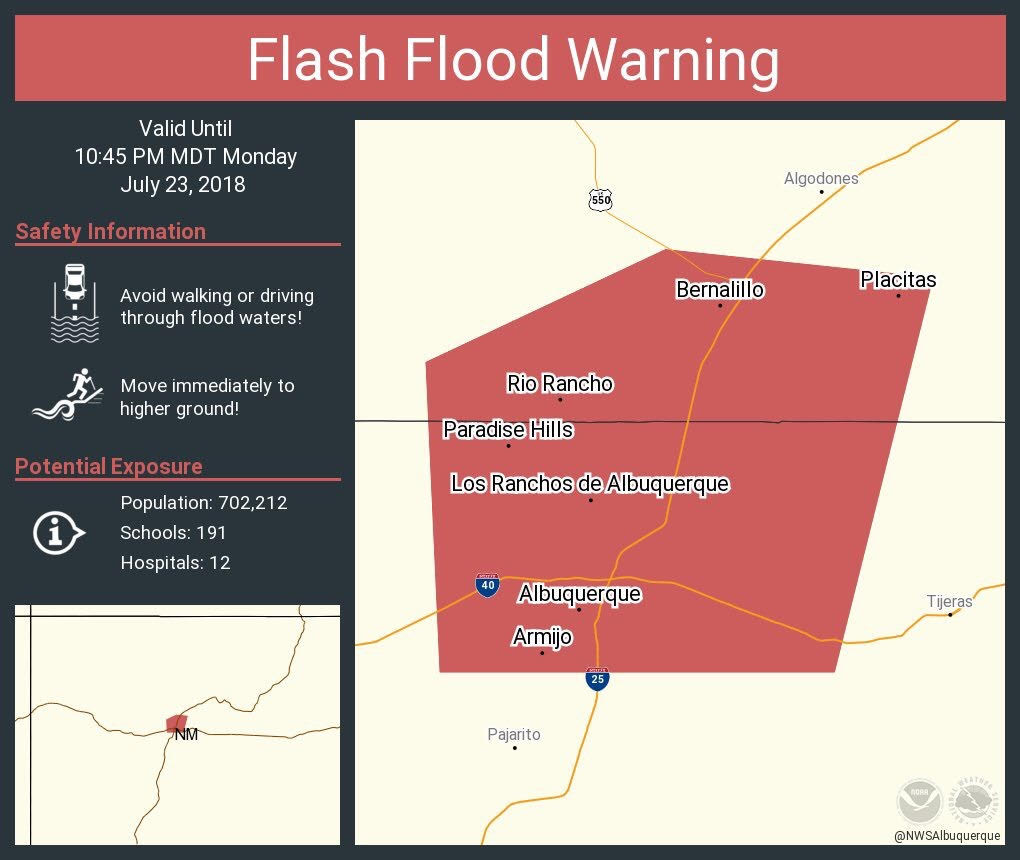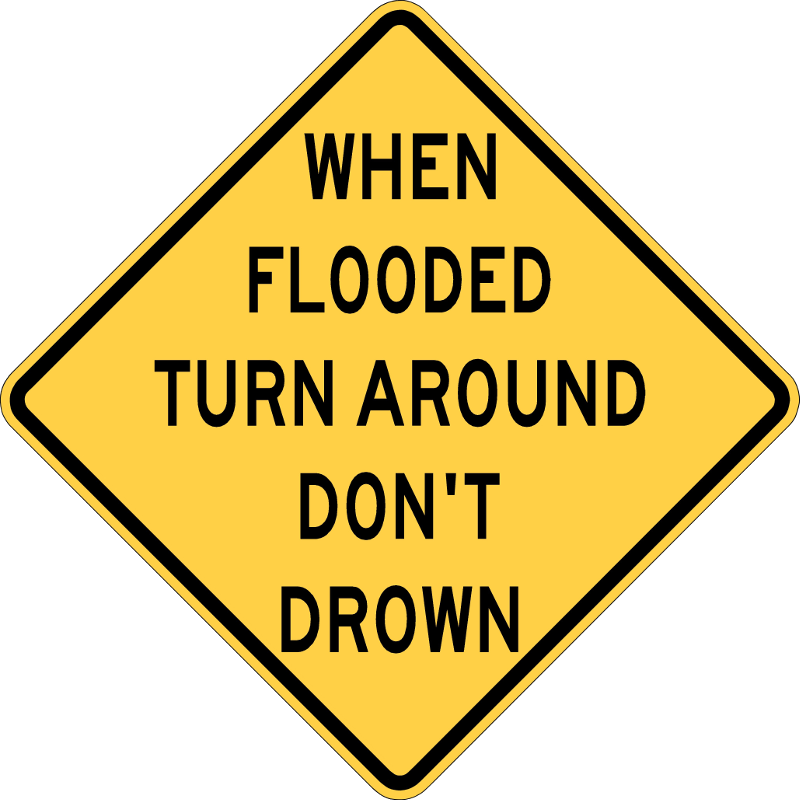
Floods are the most common natural disaster, and floods kill more people each year than any other weather disaster. There are different types of flooding that can be caused by heavy rain, snow melt, or dam or levee failures. Floods can happen very quickly or over a long period of time and may persist for just a few hours or even days. It does not have to take a lot of water to cause flooding. Just six inches of swift-moving water is enough to sweep you off your feet!
There are two basic types of flooding:
Ready...Most hazardous weather is forecast days in advance. Begin your preparations by paying attention to the weather forecast. The Key Impacts Graphic is a great product issued by the National Weather Service that highlights the potential for hazardous weather over the next seven days.
Set...If flooding is possible, then a Flood or Flash Flood Watch will be issued. This does not mean that flooding will occur, only that it is possible. This means that conditions are favorable for flooding, and you need to pay attention and stay aware in case it does happen. Listen to your NOAA weather radio or tune in to your local broadcast media for the latest information. Have a plan in place that includes where you will go in case a warning is issued.
Go! When flooding is occurring or is imminent, the National Weather Service will issue a Flood or Flash Flood Warning. This means that you need to implement your plans to protect yourself.
 |
 |
|
When flooding is possible, a Flood Watch will be issued. A Flood Watch is a zone-based products that is issued hours to even days before flooding is expected. This is your notification that you need to stay aware and be prepared to take action should a warning be issued. |
When flooding is occurring or is imminent, a Flood or Flash Flood Warning will be issued. Flood/Flash Flood Warnings are storm-based warnings in the form of a geographic polygon that are issued minutes to even hours in advance of flooding. This is your notification that you need to seek shelter. |
If you are under a Flood or Flash Flood Warning, find shelter right away. Move to higher ground or a higher floor. However, do not put yourself in an attic or another room with no windows. This will ensure that you do not become trapped. Be sure to carry your cell phone with you in case you need to call for help.
|
Road damage from a flash flood in Abiquiu, New Mexico on June 11, 2015. Photo by Jan Hauser.
|
 |
|
Do not ever drive through flooded waters! Turn Around, Don't Drown. It takes less water than you realize to sweep your car away. Six inches of water is enough to stall your vehicle, and a foot of water is enough to sweep your car away. In addition, you do not know what is underneath the water. The road may not be there anymore.
|
|
|
Water can be channeled in arroyos quickly as seen here in the North Diversion Channel in Albuquerque, New Mexico on July 19, 2013. |
It does not have to be raining in an area in order for flooding to develop there. Flood waters can travel rapidly down mountainous terrain. Within minutes, water can be channeled in arroyos, and a dry creek can quickly turn dangerous. Do not play in or around arroyos! |